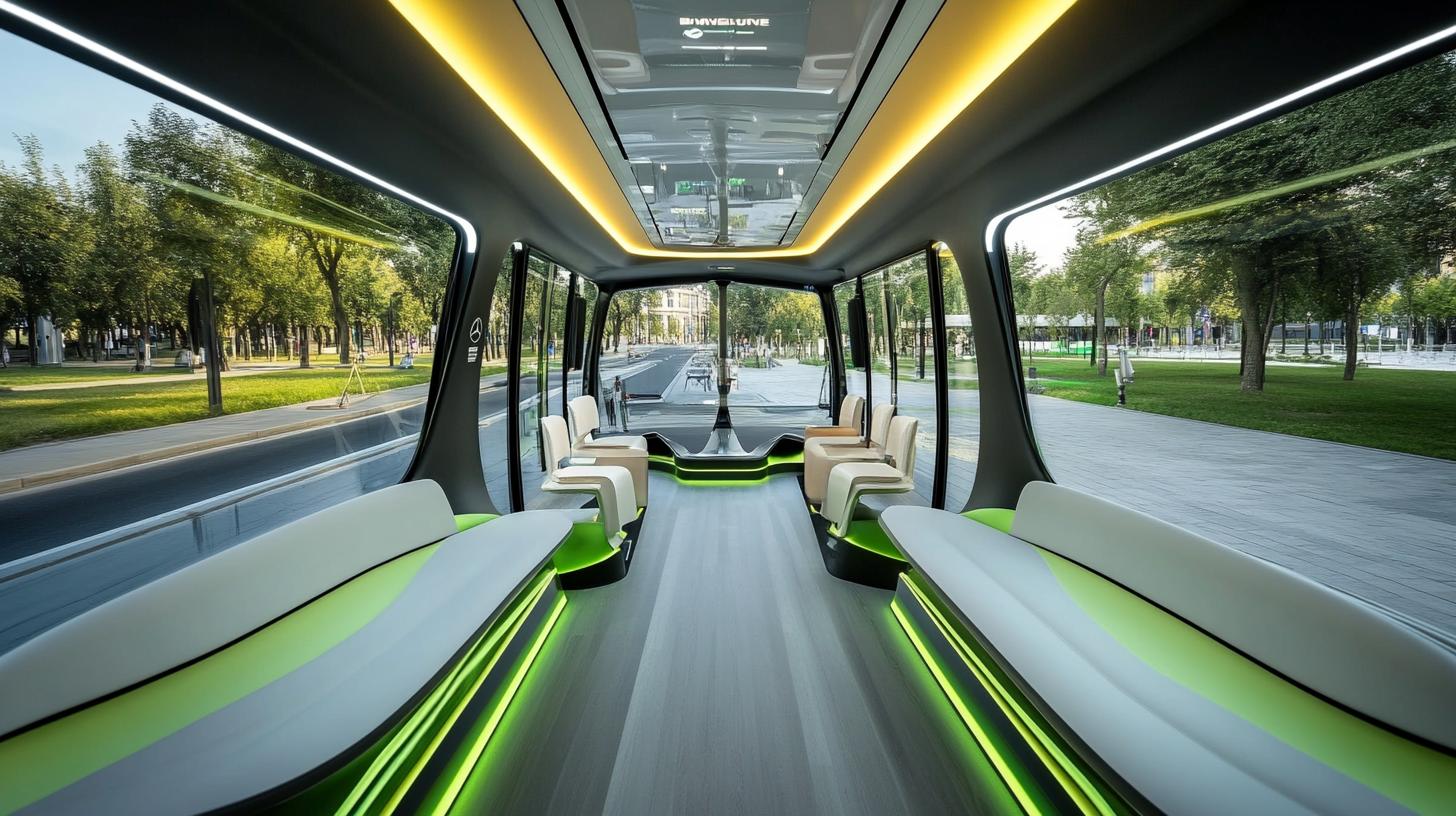Daimler Buses is taking a bold step towards sustainable transportation with the introduction of the Mercedes-Benz eIntouro. This battery-electric bus promises to transform intercity travel with its remarkable range of up to 500 kilometers.
At the heart of the eIntouro is the advanced LFP (lithium iron phosphate) battery technology, identical to that found in the Mercedes-Benz eActros 600 truck. By standardizing these components, Daimler aims to streamline production and boost profitability across its vehicle divisions. Each bus can be equipped with one or two battery packs, boasting a nominal capacity of 207 kWh per pack. Fast charging capabilities allow the batteries to be replenished in just 70-90 minutes, depending on configuration.
The eIntouro comes in two sizes, measuring 12.18 meters and 13.09 meters, and can comfortably accommodate between 50 and 63 passengers, rivaling its diesel predecessors. Furthermore, the LFP batteries provide the advantage of utilizing over 95% of their capacity in practical usage and are designed to last up to 15 years.
A significant innovation in the new eIntouro is its modern electronic architecture, which supports over-the-air updates. This technology reduces the need for frequent trips to service centers, setting Daimler Buses apart as the first European manufacturer to offer such updates for buses.
Customers will be able to place their orders for the eIntouro in early 2025, with the bus making its official debut in October 2025 at Busworld in Brussels. Deliveries are projected to commence in 2026, marking a significant leap towards eco-friendly public transportation.
Revolutionizing Public Transit: The Hidden Impact of Battery Technology in Urban Transport
In the wake of Daimler Buses’ announcement of the Mercedes-Benz eIntouro, the spotlight has shifted to the transformative power of battery technology on public transportation and its ripple effects on global innovation. While the focus has primarily been on sustainability and efficiency, there are other significant—and lesser-known—impacts that these developments in battery technology are having on both the evolution of humanity and new technologies.
Changing Urban Dynamics
The implementation of electric buses like the eIntouro could significantly alter the dynamics of urban planning. City planners are being forced to reconsider infrastructure designs, particularly in terms of recharging facilities and grid management systems. These changes necessitate not only technological advancements but also policy innovations to seamlessly integrate electric buses into existing transit systems. The advantage here is a potential reduction in urban air pollution, contributing to healthier city environments and lowering healthcare costs associated with pollution-related illnesses.
From Energy Storage to Grid Resilience
The eIntouro’s reliance on advanced LFP batteries also opens up the conversation about energy storage and grid resilience. By pushing the envelope on battery capacity and efficiency, technologies originally intended for buses might find applications in home energy systems, electric grid stabilization, and industrial power solutions. However, the downside may include significant upfront costs and the necessity for specialized skills to handle and maintain effectively.
Environmental Footprints
An intriguing discussion point is the environmental footprint of producing and disposing of LFP batteries. While these batteries are lauded for their durability and high utility capacity, the mining processes for lithium and other materials raise environmental and ethical concerns. Measures are being developed to address battery recycling, but full-scale solutions remain years away. Debate continues on the best methodologies: Should focus be on improving battery life, investing in recycling technologies, or an altogether new form of energy storage?
The Role of AI and Connectivity
Beyond hardware, the eIntouro’s cutting-edge over-the-air (OTA) update capability highlights the merging of artificial intelligence with vehicle technology. With digital connectivity, software enhancements can improve bus efficiencies and passenger experiences without physical upgrades. This reduces downtime and increases operational efficiency. However, it also raises questions about data privacy, cyber-security, and the need for robust technological safeguards.
Advantages and Disadvantages
A primary advantage of such electric buses is a substantial decrease in dependency on fossil fuels, alongside reduced carbon emissions. They hold the promise of quieter, more efficient public transport systems that align with global decarbonization goals. Yet, a critical disadvantage remains the up-front costs and need for new infrastructure investment, which could pose challenges for budgeting within city administrations, potentially delaying mass adoption.
Is Electrification the Sole Future of Public Transport?
While electrification presents a compelling direction, questions persist about its exclusivity as the future. Could hydrogen fuel-cell technologies play a role in regions where battery infrastructure remains impractical? Balancing diverse technological investments could ensure more resilient transport solutions.
As we move toward more sustainable transit solutions, www.daimler.com continues to blaze a trail in research and development in these technologies. To stay current, engaging with organizations driving technological innovations is vital. Such discourse influences both policy and practice in urban mobility planning, accelerating global transition toward sustainable futures.
In a rapidly changing world, where every innovation holds potential—and inevitable—contradictions, continuing dialogue will help navigate both the promises and perils these technologies unfold.







